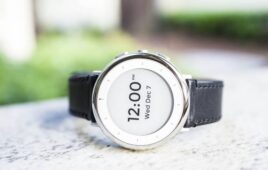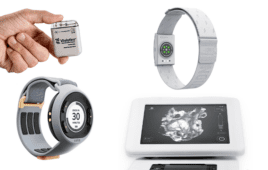The use of today’s advanced materials can be advantageous
for orthopedic implants and instruments as they can offer a variety of
benefits. However, they can also create challenges for developers concerned
with getting the exact tolerances needed. Machining these materials to achieve
the desired results is a service best outsourced to a solutions partner who is
an expert with a given material.
.jpg) |
| Bone staple |
Shape memory alloys offer unique material properties to the
orthopedic industry. The ability to maneuver through tight, torturous
anatomical pathways is a key differentiating factor for shape memory based NiTi
alloys. While these materials offer new possibilities that were previously
unattainable using conventional materials, machining them can be a challenge.
NiTi alloys are unique in that they work harden rapidly and are sensitive to
thermal loads induced during manufacturing. In addition, devices produced from
NiTi can be formed post-machining to yield complex device shapes. Because of
these factors, it is critical for designers to find a solutions partner that is
fully versed in both material and processing.
NiTi alloys are of particular benefit to the sports medicine
segment of the orthopedic market. The main benefit of these alloys is the
ability to accommodate up to 6% strain without permanent deformation when in
the superelastic condition. While this unique attribute makes NiTi alloys an
attractive option for designers, it needs to be balanced against high material
and processing costs. In particular, knowledge of the material is critical for
effective, close tolerance processing.
 |
| Orthopedic implant |
There are several machining techniques available for
effectively manipulating NiTi. All standard milling, drilling, and turning
techniques are possible, but only under the correct parameters. Conventional
techniques such as these need to be carefully chosen because of the high
ductility and rapid work hardening of the material. Additionally, because of
the heat generated at the cutting surface, appropriate cutting conditions/coolants
must be employed. Care must be taken when choosing cutting coolants to avoid
any fluid containing Halogen elements (Fluorine, Chorine, Bromine, and Iodine)
due to their highly corrosive nature when exposed to NiTi alloys. This is
especially critical in applications with small or blind features that post-process
cleaning may not reach.
For some applications, conventional
machining techniques may not be suitable due to the high cutting forces
imparted during manufacturing. In instances such as these, electrical discharge
machining (EDM) or profile grinding techniques can be employed. These processes
allow complex, close tolerance geometries to be achieved under minimal to no
load conditions. Orthopedic soft tissue anchors and instrumentation are
examples of devices that lend themselves to this style of machining. EDM is
capable of producing crisp features down to a few thousandths of an inch in
thickness, which is advantageous for developers trying to achieve micro
instrumentation. While this technology may be ubiquitous in the industry, it is
critical to find a solutions partner that is experienced in both the machining
technique and material. Several factors must be considered when using EDM with
NiTi alloys—work holding, cutting conditions, and subsequent post-processing
activities. These factors all play a role in choosing an EDM strategy that
achieves the desired tolerances and does not degrade the material properties.
 |
| Spinal rod |
The ability to consistently and reliably hold components for
machining is also critical when considering advanced materials. Whether an
array of components or a single component is being held, fixturing is the
critical foundation for all machining activities. At Memry, this is accomplished through the use of
precision fixturing developed and produced internally. Experienced toolmakers
can develop work holding solutions for applications ranging from single station
“soft” tooling all the way up to full-scale production tooling. Knowledge of
the abrasive, yet ductile nature of NiTi alloys has enabled engineers and
toolmakers to design and build robust fixturing to accommodate any machining
technology or production volume.
Identifying a strategic solutions partner is crucial for
designers looking to maximize their designs when working with advanced materials.
This is especially important in today’s quick-turn environment. Developers who
partner with an OEM capable of taking a product from conception through mature
production have a clear advantage
Walter W. Heitmann is the machining technology manager at
Memry. He is responsible for the application and implementation of new cutting technologies.
Heitmann can be reached at 203-739-1177 or walter_heitmann@memry.com




